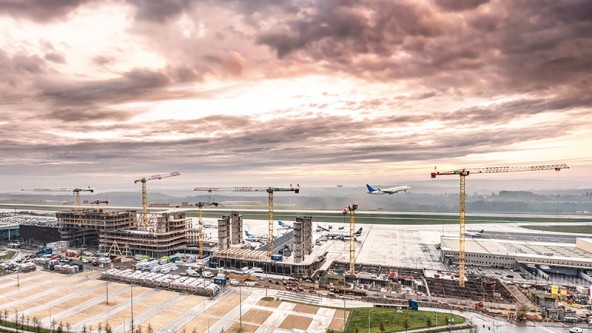Annual report 2023
Revenue in € m from 561 - 9.1% |
Investments in € m from 95 + 32.6% |
Employees from 2,613 + 0.7% |
Revenue by sales regions
61.9%
European Union
11.8%
Non-EU countries
10.4%
North America
1.2%
Central and South America
5.7%
Asia and Oceania
9.0%
Africa, Near and Middle East

Difficult circumstances in Europe
Global construction output is rising and the international building sector is proving resilient despite high inflation and restrictive monetary policy. However, construction output is declining in Europe – the most important sales region for the product segment – with the heaviest impact on the advanced economies and particularly the residential construction sector. This slump in the construction industry in Europe and the uncertainty regarding trends in material costs and interest rates is affecting the order situation.
In the European Union, which is the product segment’s main sales region, significant declines in revenue were recorded, in particular in Germany, Belgium and France. Non-EU countries also fell short of the previous year’s levels. By contrast, there were encouraging trends in North America, Central and South America, and the Africa, Near and Middle East sales region. The US and Egyptian markets performed particularly well. There were declines in revenue in the Asia and Oceania sales region, in particular in India, Australia and Hong Kong.
The mobile construction crane area developed positively in the product segment. These cranes enable flexible and lowemission electric operation on building sites, for example using the site’s electricity supply or the Liduro Power Port. This type of hybrid power concept is featured in the optimised MK 140-5.1, which Liebherr will start supplying in 2024.
Focus on innovation and research
The last business year also saw development work on new product platforms. One pioneering development was the Tower Crane Operating System2, which will offer advanced control for many bottom-slewing cranes. Active collaboration with networks of renowned research institutes plays a central role in the development of the various concepts. The research activities range from basic groundwork for networking construction machines to solutions for improving the energy efficiency of tower cranes.
The Group showcased numerous machines with alternative drives as part of a construction project by Netze BW in Schemmerberg (Germany). The MK73-3.1 mobile construction crane with electric operation was also used on the project. This three-axle machine is compact and manoeuvrable, meaning that it is extremely quick and flexible to use, particularly in areas that have already been built on. The crane is ready for action within ten minutes and can either be supplied with electricity from the site or via its integrated generator.
Another outstanding project from the last business year came when two luffing jib cranes – a 280HC-L12/24 and a 542HC-L18/36 – were used in the construction of New Zealand’s tallest residential building. The Liebherr Tower Crane Solutions project department supported the construction of the Seascape skyscraper by designing an efficient climbing process for both cranes. Once it has been completed in 2024, the building will be an impressive sight on Auckland’s skyline with its 52 floors and height of 187m.
In view of the difficult market environment, Liebherr is anticipating revenue to fall again for the product segment in the coming business year.
Tower cranes
In the tower cranes product segment, Liebherr achieved €510 million in revenue, which translates to a €51 million or 9.1 % decrease compared to the previous year.
